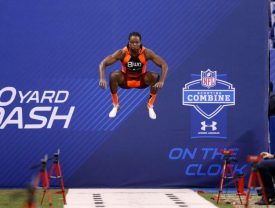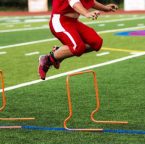If you’re an athlete, you want a higher vertical jump. It doesn’t matter if you’re playing a sport (volleyball, basketball, soccer, etc.) or simply opting to improve your physical fitness. Getting a higher vertical jump -due to the numerous muscles being worked- is something every athlete wants.
Luckily, the process for improving your jump doesn’t need to be all that complex. Rather, by focusing on some select key areas, you can dramatically improve your results.
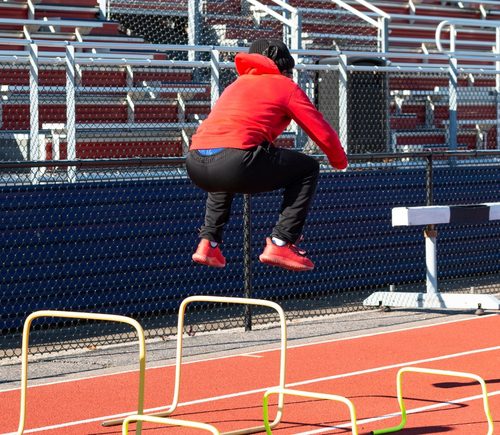
Jump Through The Roof With The Verticle Academy From Overtime Athletes
#1. IMPROVE MUSCLE STRENGTH
First and foremost, if you want a higher vertical jump, you’re going to need to increase your overall strength. It may sound obvious, but it’s true. A more physically powerful athlete will always jump higher than an athlete that isn’t as powerful.
The reason for this comes down to simple science and mathematics. When multiplied by the velocity, the amount of force produced will result in a correspondingly high jump. Basically -in English- how hard you push against the ground will directly impact how high you jump.
While all strength exercises can contribute to an improved jump, the primary ones you’ll want to focus on are bilateral and unilateral exercises. These include squats, raises, and kettlebell swings. Start with just using your body weight in order to build up a strong foundation. Then, as you get stronger, bring in heavier weights to improve your results.
Squats
Ask any fitness expert or personal trainer. They will tell you that squats are one of the best strength exercises you can do. Focusing squarely on increasing your jump, squats act as an excellent exercise due to the fact that they train your legs to launch off the ground with power and control.
Not only do they help you jump higher, but they also improve speed and acceleration. A scientific study1 revealed that, from squats alone, a person could see improvements in their vertical jump between 1.5 and 2 inches.
Bulgarian Split Squats
Going one step further from standard squats, performing a Bulgarian Split Squat allows you to train either leg individually while reducing any potential muscle imbalances found in either one individually. By re-balancing both legs, you can ultimately make your vertical jump even higher.
This squat not only strengthens the front leg’s muscles but it also aides the back leg as well by strengthening the glutes and hamstring. Because the back leg is placed in a raised position on a bench or plyo box, you are also performing a slight hip flexor stretch when performing the squat.
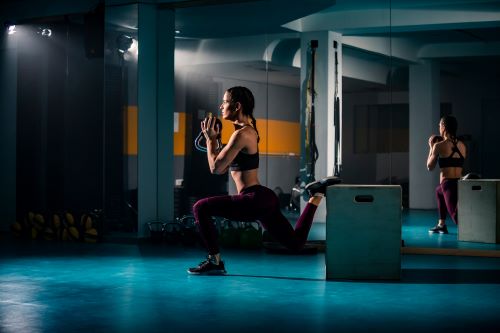
Calf Raises
While not as intense as a full squat, calf raises offer tremendous value in strengthening your lower legs. This is ideal for performing quick jumps as well as helping your overall lower body push further off the ground.
You can start by raising both legs. Over time and as you progress, you can move to raising one leg individually, improving your balance in either leg.
Dumbell & Kettlebell Swings
Dumbell Swings and Kettlebell Swings are an excellent way to build a strong lower body and increase your jumping ability. By using either dumbbell swings or kettlebell swings, you are working to improve your posterior chain (glutes, hamstrings, shoulders, and back) and extend the knees, ankles, and hips all at the same time.
These movements and muscles are vitally important for giving you a greater overall force of delivery when jumping.
#2. ADD EXPLOSIVE MOVEMENTS
While it is essential that you have strength for your vertical jumps, it is just as important to also have speed. As briefly touched on when talking about Calf Raises, if you aren’t able to quickly produce your strength in as short a time as possible, you aren’t going to maximize your jump’s height.
For athletes, an average jump typically produces around half a second’s worth of force. Any force produced past that is wasted energy. This means that if you want your jumps to be longer, you’re going to need to create as much power and force as you can as quickly and as early into the jump as possible.
Many exercises can help with this. However, for the best results, it is recommended that you do Plyometric exercises. These explosive movements help increase muscle strength during rapid velocity.
Jump Rope
One of the oldest forms of exercise, jumping rope has a myriad of benefits. On top of being excellent cardio and anaerobic exercise, jumping rope strengthens the muscles required for a vertical jump. They also are a great way to increase your overall jumping ability, making you jump faster.
When first starting, try to keep your ankles as close together as possible while jumping. Later, as you become more proficient, you can perform a single-leg jump. This trains your fast-twitch muscles and muscle fibers to more effectively explode when jumping off the ground.

Squat Jump
A Squat Jump is great for improving leg strength. This is done by helping the core muscles and the stabilizers. This offers an increase in balance and stability.
Like standard squats, Squat Jumps work out the calves and hamstrings while also stretching the muscle fibers in order to launch from the ground with rapid power.
Broad Jump
Broad Jumps are great for helping you jump faster and with more explosive strength. By launching yourself out, the hips, ankles, and knees are all greatly extended.
Related: 3 Great Jumping Exercises for Athletes
Depth Jump
An advanced form of plyometric exercise, Depth Jumps are the process of falling off of a small box and immediately launching up into a Squat Jump. By shortening the window between the contracting and elongating stages in the muscle, you can immediately create a lot of rapid force.
For those just starting, these movements are not recommended. Because of the potential for injury, only those that are well-trained should ideally perform these exercises.
#3. IMPROVE FLEXIBILITY
Flexibility is an essential aspect of fitness and is vital for those looking to jump higher. As you use muscles in your core, back, and shoulders (in addition to your legs), the connection between them is strengthened and improved.
The best way to improve your flexibility is through dynamic stretching. This way, you can target your hamstrings, calves, quads, and hip flexors, all vital for giving you an increased vertical jump.
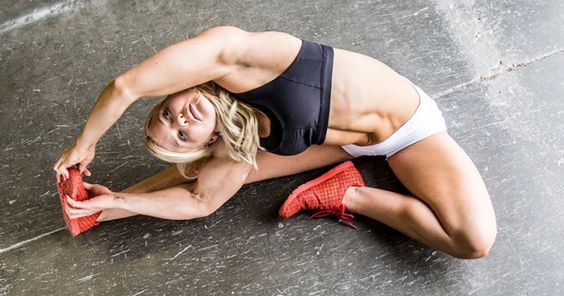
#4. INCREASE MUSCLE MOBILITY
Increasing muscle mobility is another essential method for increasing your jumping ability. Not only that, but improved mobility is also ideal for reducing your overall chance of injuring yourself.
This is because, for most people, many of the muscles in our body are excessively tight. This tightness reduces the speed and force available when performing an explosive action, thus limiting how far and how fast we can move.
Stretching the muscles out prior to any of the exercises above -as well as before jumping- can ultimately allow you to create more power and launch yourself higher.
#5. MAKE SURE TO RECOVER
Finally, recovery is an often ignored and undervalued part of fitness and training. By not getting enough proper rest, the muscle fibers, joints, and connective tissue will not have the ability to fully heal and may lead to injury or overuse.
If you are just starting out, consider training on the more conservative side. Keep your maximal effort jumps between 10 and 20 per session while resting a full 48 hours before the following session.
As you grow more physically capable and the height of your jumps continues to increase, you will be able to work longer and harder during a session while still retaining longevity in your joints and muscle fibers.
Jump Through The Roof With The Verticle Academy From Overtime Athletes
References
1 Improved Maximum Strength, Vertical Jump and Sprint Performance after 8 Weeks of Jump Squat Training with Individualized Load https://www.ncbi.nlm.nih.gov/pmc/articles/PMC4974862/

Ryan is a former college wrestler and lifelong fitness fanatic with over 25 years in the industry. He’s run half marathons, tackled mud runs, placed in body transformation contests, and coached everything from wrestling to girls’ soccer.
Along the way, he’s tested hundreds of supplements and built a deep well of supplement knowledge. His work has appeared in Muscle & Strength, Testosterone Junkie, The Sport Review, and more. Today, he’s the editor-in-chief of this site, still training hard and helping others reach their goals. Connect with him on LinkedIn below.



